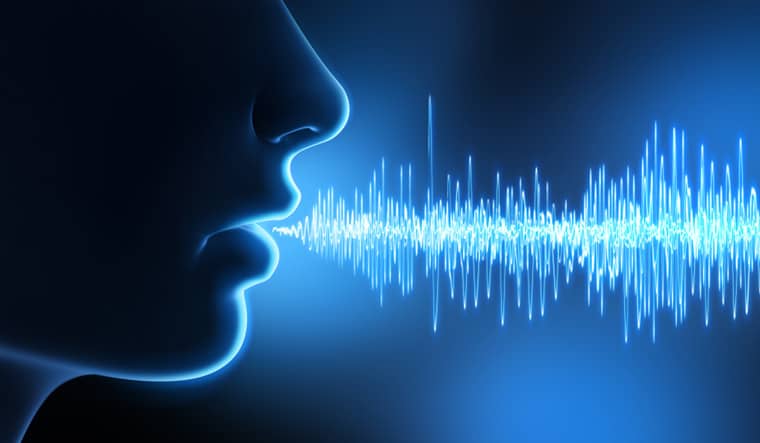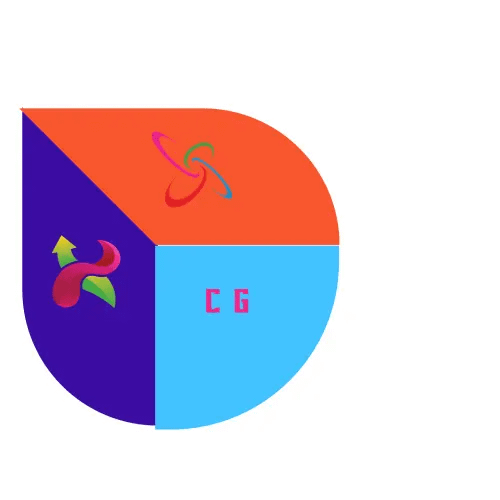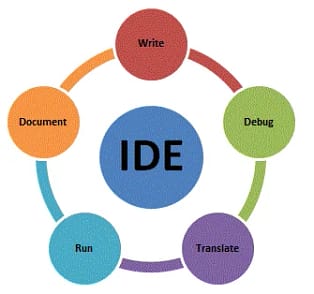you wanna create animation for many purposes such as if you are a graphics designer or if you are wanna create 3D a game. Although making a 3D game on your own is a difficult task we usually need a team to do this, such as level scripter, level designer, game designer, sound, animation controller, programmer, and many others.
Eventually, most of these facilities will be provided by gaming engines as a result we can make indie games or games of good animation if are experienced in different IDE’s. But if you know more about such things you can find some interesting things here.
In this blog, we gonna discuss how to create 3D animation in simple steps and what skills should excel. So let’s get started.
How to create 3D animation:
Let’s delve into the step-by-step process of creating 3D animation, elaborating on each stage:
Conceptualization:
Begin with a clear idea or storyline for your animation. What’s the purpose? Who are the characters? What’s the setting? Refine the script to ensure a compelling narrative.
Conceptualization in 3D animation involves understanding the vision, creating storyboards, and translating ideas into 3D scenes. Storyboards serve as blueprints, guiding the animation process from concept to reality.
Storyboarding
Storyboarding involves creating a visual roadmap for the entire project. It’s like sketching out the scenes before they come to life. These storyboards serve as blueprints, guiding animators, directors, and production teams throughout the creative process.
By breaking down the narrative into frames, storyboards help visualize camera angles, character movements, and scene transitions. They ensure that everyone is on the same page, aligning the vision and ensuring a smooth transition from concept to the final animated product.
Create a visual blueprint using sketches or digital tools. Each frame represents a scene, showing camera angles, character positions, and actions. Arrange the frames in the order they’ll appear in the animation.
3D Modeling:
3D modeling involves crafting detailed digital representations of characters, environments, and props. These models serve as the building blocks for the entire animation process. Let’s explore further:
Types of 3D Models:
Manufactured: This category includes static objects that remain relatively unchanged during a scene. Examples are background mountains, vehicles, buildings, and tools.
Organic Modeling: Here, complexity comes into play. Organic models represent objects with moving parts, such as characters, animals, or flowing rivers.
Benefits of 3D Modeling:
Efficiency: Modeling artists work in a digital environment, allowing quick modifications without starting from scratch. This speed enhances animation quality within tight deadlines.
Realism: 3D models contribute to lifelike animations. Accurate representations of objects in our 3D world lead to realistic scenes.
Creative Control: Animators can easily create variations, experiment with lighting, and enhance overall aesthetics using 3D models.

Texturing:
Texturing in 3D animation involves creating and assigning texture maps to different parts of the 3D models. These texture maps provide detailed information about surface qualities such as color, reflectivity, roughness, and bumpiness. Let’s explore further:
Material Texture:
Texture plays a crucial role in conveying the material of an object in a 3D world. It gives viewers a sense of what the object is made of.
For example, if a 3D model represents a brick wall, the texture artist ensures that the 3D brick wall shares the same color and surface properties as a real-world brick wall when rendered.
Light Effects:
In the real world, objects exhibit unique properties when exposed to light: reflection, refraction, anisotropy, and more.
These same properties must be applied to 3D objects made of the same material in animated 3D world
Rigging and Skinning:
Rigging is the process of creating a digital skeleton that allows animators to control the movement and deformation of characters, creatures, and other 3D objects. This digital skeleton, known as a rig, consists of interconnected joints.
Each joint has its position, rotation, and scale values, determining how connected parts move. Rigging also includes controllers or controls that make it easier for animators to manipulate a 3D model using on-screen handles, sliders, buttons, or custom interfaces instead of manually adjusting each joint.
Skinning, on the other hand, binds the actual 3D mesh to the joint setup created during rigging. It ensures that the joints influence the vertices of the model correctly.
Weight painting, a crucial part of skinning, allows the manual assignment of influence to each joint on the mesh. Proper skinning ensures accurate movement and deformation of the model, resulting in realistic animations.
Animation:
Animation is the art of creating the illusion of movement by photographing a sequence of drawings, models, or even puppets. Our eyes retain an image for only about 1/10 of a second. When multiple images appear in rapid succession, our brain blends them into a single moving image.
In traditional animation, pictures are drawn or painted on transparent celluloid sheets and then photographed. Early cartoons used this technique, but nowadays, most animated movies are made using computer-generated imagery (CGI).
The frame rate, or the number of consecutive images displayed per second, determines the smoothness of motion. For instance, 12 frames per second allows for motion but may appear choppy, while a frame rate of 24 frames per second is often used for smoother animation

Rendering:
Rendering is the process of creating a 2D image or sequence of images from a 3D scene. It’s like taking a photograph of a virtual world, capturing lighting, textures, and geometry. The goal is to transform raw 3D data into visually appealing images.
: Rendering involves complex math. Algorithms simulate how light interacts with surfaces. One popular method is ray tracing. It traces rays of light as they bounce around the scene.
Rendering calculates how light affects materials (shading) and applies textures. Realistic rendering considers indirect lighting (light bouncing off surfaces). Renders happen in separate layers (passes).
Real-time rendering is Used in games and interactive applications, sacrificing some realism for speed. Tools like Blender, Maya, and Cinema 4D have built-in render engines. Third-party engines like Arnold, V-Ray, and Redshift offer advanced features.
Compositing:
Compositing is the technique of combining different visual elements into a single image or footage.
By layering images, graphics, or special effects, compositing enhances the look and feel of an animated sequence, making it more visually striking and dynamic. Compositing involves combining multiple render passes or adding layers to create a cohesive final image.
Most compositing today, including 3D animation, is done digitally. Compositors use specialized software to touch up renders, add effects, and fine-tune the visual composition.
Editing and Sound:
Sound design refers to the creation and integration of audio elements to enhance the visual storytelling experience in animation. It encompasses music, dialogue, and sound effects.
For instance, sound design involves recording distinct sound effects for a character’s movements, composing ambient sounds to establish specific atmospheres, or designing unique soundscapes for fantastical worlds.
Why Sound Design Matters:
Sound design plays a pivotal role in enhancing viewer immersion. It establishes the auditory environment of a scene. Well-crafted audio elements breathe life into characters and environments. From rustling leaves to bustling city streets, sound transports the audience into the animated world.
Whether it’s the thrill of an action sequence, the tenderness of a heartfelt moment, or the suspense of a thrilling chase, sound design amplifies emotional responses. Unique sound effects, vocal traits, and stylized dialogue reinforce characters’ personalities and quirks.

Export and Share:
Save the design on your PC created from any software. Export the animation as video (MP4, MOV) or image sequence (PNG, TIFF). Share your creation on platforms like YouTube, Vimeo, or social media.
FAQS:
Let’s explore some frequently asked questions on how to create 3D animation:
What is animation?
Animation involves filming a rapid succession of closely related static images to create an impression of movement. Our eyes retain images for only about one-tenth of a second, so when we see them appear quicker than that, our brain merges them together.
Most animations capture 12-24 individual images per single second of film. In the past, animations were often hand-painted or drawn onto celluloid (cel) sheets. Today, CGI techniques are more common.
Is animation the same as cartoons?
Cartoons are animated films, often characterized by exaggerated visual style and wacky plotlines. They have a distinct history, tracing back to satirical magazine illustrations and comic strips from the 18th and 19th centuries.
What are animatics?
Animatics are rough sequences of images used to help animators and directors plan shots, timings, and scenes. Essentially, they serve as animated storyboards, commonly used in cartoons and commercials. Traditionally, animators filmed individual drawings with a camera, but today, software like Adobe Illustrator or After Effects is often used.
What about anime?
Anime is a style of Japanese animation known for imaginative plotlines, distinctive camera work, and beautiful settings. It’s a highly diverse medium, but its roots lie in Japan and its unique cultural context.
How do I get started as an animator?
Begin by learning the basics of animation techniques and terminology. Explore software tools like Adobe Animate, Blender, or Maya. Practice creating short animations to build your skills. Consider taking online courses or joining animation communities to learn from others.
Conclusion:
The art of creating animation is a captivating journey that combines creativity, technical skill, and dedication. From the initial concept and storyboard to the final rendering, each step requires attention to detail and a passion for storytelling. I hope you understand how to create 3D animation.
Whether you’re a seasoned animator or just starting out, embracing the iterative nature of the process and continuously honing your craft is key to achieving stunning results.
By staying curious, embracing challenges, and learning from both successes and setbacks, you’ll not only bring characters and worlds to life but also embark on a fulfilling artistic adventure. So, keep experimenting, keep pushing boundaries, and above all, keep animating!



